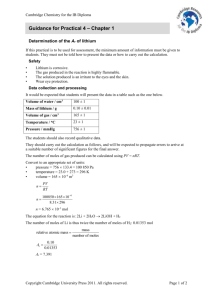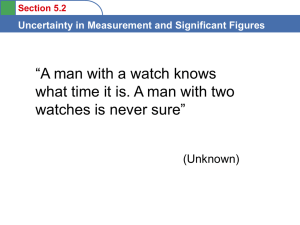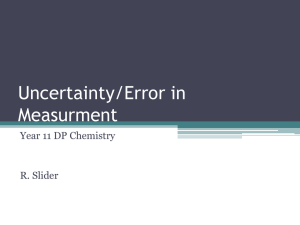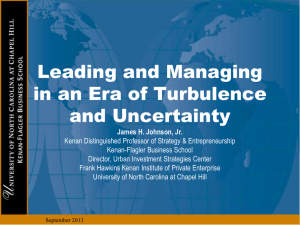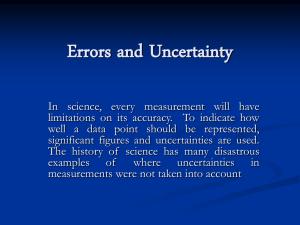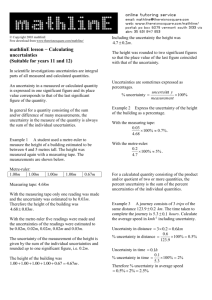Chapter11 Measurement and data processing
advertisement
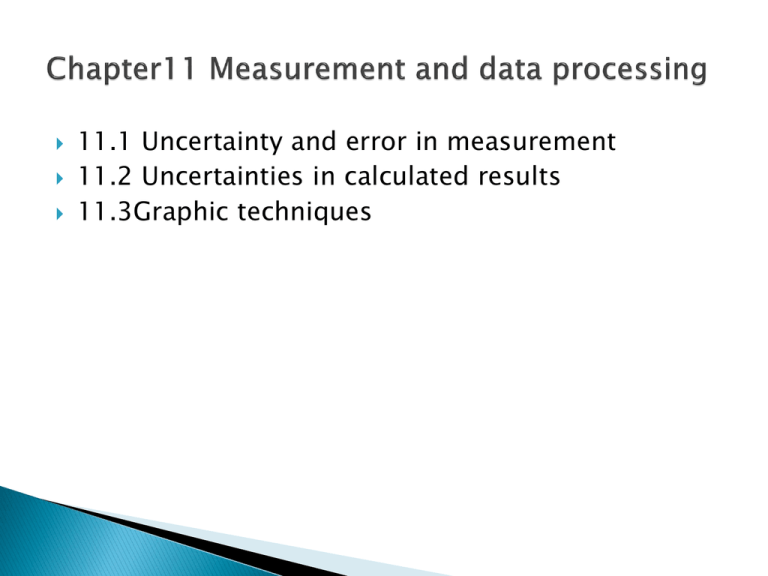
11.1 Uncertainty and error in measurement 11.2 Uncertainties in calculated results 11.3Graphic techniques Uncertainty in analogue instruments For example, graduated cylinder, pipette, burette, or alcohol thermometer The uncertainty of an analogue scale is +half the smallest division. Uncertainty in digital instruments For example, analytical balance The uncertainty of a digital scale is + the smallest scale division. Scientific Notation Express the following in standard notation: a. 0.04g b. 222mL c. 0.0030g d. 30˚C Significant Figures What is the number of significant figures in each of the following? a. 15.50L b. 150s c. 0.00123g d. 150g Random errors caused by: 1. the readability of the measuring instrument 2. the effects of changes in the surroundings 3. insufficient data 4. the observer misinterpreting the reading Can be reduced through repeated measurements Systematic errors Examples include the following: 1. Measuring the V of water from the top of the meniscus rather than the bottom 2. Overshooting the V of a liquid delivered in a titration both lead to V which are too high 3. Heat losses in an exothermic reaction will lead to smaller T changes. can be reduced by careful experimental design. Accuracy refers to how close the reading are to the true value. The smaller the systematic error, the greater is the accuracy. Precision refers to how close several experimental measurements of the same quantity are to each other. The smaller the random error, the greater is the precision. Multiplication and division The answer should be rounded to the same number of S.F. as the least precise data. EX. Density=5.00g/2.3mL =? Addition and subtraction The answer should be rounded to the same number of decimal places as the least precise value. Ex. Total mass= 50g+1.00g = ? D= 2.2g/mL Total mass= 51g when adding or subtracting measurements, the uncertainty is the sum of the absolute uncertainties. When multiplying or dividing measurements, the total percentage uncertainty is the sum of the individual percentage uncertainties. The absolute uncertainty can then be calculated from the percentage uncertainty. Percentage uncertainty= (absolute uncertainty/measured value) × 100% Percentage error = (accepted value – experimental value/accepted vale) × 100% The concentration of a solution of HCl =1.00+0.05mol/L and the volume = 10.0+0.1mL. Calculate the number of moles and give the absolute uncertainty. Step1: number of moles=concentration × volume =1.00mol/L × 0.01L=0.0100mol Step2: % uncertainty in concentration=0.05/1.00 ×100 =5% Step3: % uncertainty in Volume=0.1/10.0 ×100 =1% Step4: % uncertainty in number of moles= 5% + 1% = 6% Step5: absolute uncertainty in number of moles = 6% × 0.0100 = 0.0006 Number of moles = 0.0100+ 0.0006mol/L



